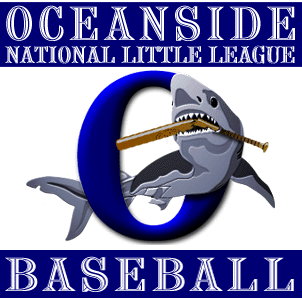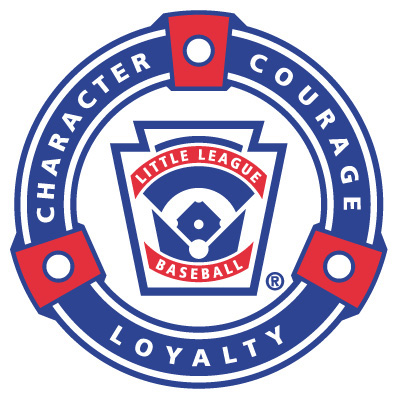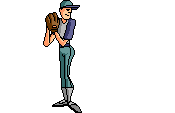News and Announcements
At the November 29th, 2006 ONLL General Membership Meeting, the Membership elected the following members to Serve as the 2007 Board of Directors. The new Board terms start December 1, 2006.
Directors
Bob Burns
Steve Carrano
Rob Cohen
Peter Curti
Jim DeLeonardis
Scott Fiata
Ellen Igoe
Bob Kaplan
Mike Levitan
Bob Madson
David Posner
Rich Scheer
Jonathan Somerstein
Steve Sorian
Lisa Stuber
Associate Directors
Anthony Porti
Scott Powers
Mike Yardeni
The newly elected Board met after the General Meeting and elected David Posner President for 2007.

At the November 29th, 2006 ONLL General Membership Meeting, the Membership elected the following members to Serve as the 2007 Board of Directors. The new Board terms start December 1, 2006.
Directors
Bob Burns
Steve Carrano
Rob Cohen
Peter Curti
Jim DeLeonardis
Scott Fiata
Ellen Igoe
Bob Kaplan
Mike Levitan
Bob Madson
David Posner
Rich Scheer
Jonathan Somerstein
Steve Sorian
Lisa Stuber
Associate Directors
Anthony Porti
Scott Powers
Mike Yardeni
The newly elected Board met after the General Meeting and elected David Posner President for 2007.

Little League Implements New Rule to Protect Pitchers’ Arms
Posted by Bob Madson at Nov 11, 2006 4:00PM PST
( 0 Comments
)
WILLIAMSPORT, Pa. (Aug. 25, 2006) – Little League Baseball is changing its decades-old pitching rules, making the actual number of pitches delivered the deciding factor in determining eligibility in the baseball division, it was announced today by Stephen D. Keener, president and chief executive officer of Little League Baseball and Softball.
Starting with the 2007 season, pitchers in all divisions of Little League, from age 7 to 18, will have specific limits for each game, based on their age. The number of pitches delivered in a game will determine the amount of rest the player must have before pitching again.
“Little League has a rich history of pioneering baseball safety innovations,” Mr. Keener said. “As the world’s largest organized youth sports program, Little League is proud to take a leadership position in youth sports safety.”
There are about 2.3 million players in the baseball divisions of Little League worldwide. There are nearly 400,000 girls softball players, but the new regulations will not apply to softball.
For all of Little League Baseball’s history, and for the history of amateur youth baseball in general, pitching regulations have used innings pitched to determine pitcher eligibility. Recently, researchers and medical professionals in the field of sports medicine have been working to determine if the actual number of pitches thrown (i.e., pitch count) is a safer way to regulate pitching in youth baseball.
Most notable among those calling for pitch counts has been Dr. James R. Andrews, M.D., medical director at the American Sports Medicine Institute (ASMI) in Birmingham, Ala. Dr. Andrews is the world’s foremost authority on pitching injuries and ulnar collateral ligament reconstruction, or, as it is better known, “Tommy John surgery.” The ASMI and the USA Baseball Medical and Safety Advisory Committee have worked closely with Little League to create the guidelines for the new regulation.
“This is one of the most important injury prevention steps ever initiated in youth baseball by the leader in youth baseball,” Dr. Andrews said. “It is certain to serve as the youth sports injury prevention cornerstone and the inspiration for other youth organizations to take the initiative to get serious about injury prevention in youth sports. I am proud that out American Sports Medicine Institute and USA Baseball can play a small role in this important initiative.”
Little League is the first national youth baseball organization to institute a pitch count. The Little League International Board of Directors approved the measure unanimously at its annual meeting today, two days before the Little League Baseball World Series concludes.
“This is the right time to make this change,” Mr. Keener said. “We call upon all youth baseball organizations, including travel leagues, to implement their own pitch count programs in the interest of protecting young pitching arms. Our goal continues to be to educate everyone, particularly parents and coaches, on the potential injuries that can occur from throwing too many pitches.”
For the past two years, Little League has conducted a Pitch Count Pilot Program to determine the feasibility of implementing a regulation limiting the number of pitches a Little Leaguer can throw in a day, and the rest required before pitching again. Fifty leagues were studied in 2005, and nearly 500 signed up for the program in 2006.
“Surveys of those leagues showed the overwhelming majority were able to implement a pitch count without any problems,” Mr. Keener said. “They also found that they were able to develop other pitchers who might not have otherwise ever taken the mound. And they found that their pitchers were stronger at the end of the season, with less arm pain.”
Previously, Little League pitching regulations limited pitchers (league age 12 and under) to six innings per week (Sunday through Saturday), and six innings per game. The number of innings allowed was increased for older age groups.
The number of pitches allowable under the new regulation is based on the pitcher’s age. Specific rest periods are in place when a pitcher reaches a higher threshold of pitches delivered in a day.
The table below gives an overview of the number of pitches that will be allowed per day for each age group during the regular season in 2007.
League Age Pitches allowed per day
17-18 105
13-16 95
11-12 85
10 and under 75
The rest periods required during the 2007 regular season are listed below.
Pitchers league ages 7 through 16 must adhere to the following rest requirements:
• If a player pitches 61 or more pitches in a day, three (3) calendar days of rest must be observed.
• If a player pitches 41 - 60 pitches in a day, two (2) calendar days of rest must be observed.
• If a player pitches 21 - 40 pitches in a day, one (1) calendar day of rest must beobserved.
• If a player pitches 1-20 pitches in a day, no calendar day of rest is required before pitching again.
Pitchers league age 17-18 must adhere to the following rest requirements:
• If a player pitches 76 or more pitches in a day, three (3) calendar days of rest must be observed.
• If a player pitches 51 - 75 pitches in a day, two (2) calendar days of rest must be observed.
• If a player pitches 26 - 50 pitches in a day, one (1) calendar day of rest must beobserved.
• If a player pitches 1-25 pitches in a day, no calendar day of rest is required before pitching again.
“The regulation might be seen as a work in progress,” Mr. Keener said. “As we move forward through the years, the limits may be adjusted as needed. And of course, we will continue to use all means at our disposal to improve the education of managers, coaches and parents.”
Regulations for tournament play (all-stars) will be similar, but with some modifications. Those regulations will be released this fall.
Little League also continues to explore other pitching-related issues, such as the use of breaking pitches.
“While there is no medical evidence to support a ban on breaking pitches, it is widely speculated by medical professionals that it is ill-advised for players under 14 years old to throw breaking pitches,” Mr. Keener said. “Breaking pitches for these ages continues to be strongly discouraged by Little League, and that is an issue we are looking at as well. As with our stance on pitch counts, we will act if and when there is medical evidence to support a change.”
Little League International is beginning a five-year study on breaking pitches by Little League pitchers. The study is being conducted by the University of North Carolina and is supported by the Yawkey Foundation.


Little League Implements New Rule to Protect Pitchers’ Arms
Posted by Bob Madson at Nov 11, 2006 4:00PM PST
( 0 Comments
)
WILLIAMSPORT, Pa. (Aug. 25, 2006) – Little League Baseball is changing its decades-old pitching rules, making the actual number of pitches delivered the deciding factor in determining eligibility in the baseball division, it was announced today by Stephen D. Keener, president and chief executive officer of Little League Baseball and Softball.
Starting with the 2007 season, pitchers in all divisions of Little League, from age 7 to 18, will have specific limits for each game, based on their age. The number of pitches delivered in a game will determine the amount of rest the player must have before pitching again.
“Little League has a rich history of pioneering baseball safety innovations,” Mr. Keener said. “As the world’s largest organized youth sports program, Little League is proud to take a leadership position in youth sports safety.”
There are about 2.3 million players in the baseball divisions of Little League worldwide. There are nearly 400,000 girls softball players, but the new regulations will not apply to softball.
For all of Little League Baseball’s history, and for the history of amateur youth baseball in general, pitching regulations have used innings pitched to determine pitcher eligibility. Recently, researchers and medical professionals in the field of sports medicine have been working to determine if the actual number of pitches thrown (i.e., pitch count) is a safer way to regulate pitching in youth baseball.
Most notable among those calling for pitch counts has been Dr. James R. Andrews, M.D., medical director at the American Sports Medicine Institute (ASMI) in Birmingham, Ala. Dr. Andrews is the world’s foremost authority on pitching injuries and ulnar collateral ligament reconstruction, or, as it is better known, “Tommy John surgery.” The ASMI and the USA Baseball Medical and Safety Advisory Committee have worked closely with Little League to create the guidelines for the new regulation.
“This is one of the most important injury prevention steps ever initiated in youth baseball by the leader in youth baseball,” Dr. Andrews said. “It is certain to serve as the youth sports injury prevention cornerstone and the inspiration for other youth organizations to take the initiative to get serious about injury prevention in youth sports. I am proud that out American Sports Medicine Institute and USA Baseball can play a small role in this important initiative.”
Little League is the first national youth baseball organization to institute a pitch count. The Little League International Board of Directors approved the measure unanimously at its annual meeting today, two days before the Little League Baseball World Series concludes.
“This is the right time to make this change,” Mr. Keener said. “We call upon all youth baseball organizations, including travel leagues, to implement their own pitch count programs in the interest of protecting young pitching arms. Our goal continues to be to educate everyone, particularly parents and coaches, on the potential injuries that can occur from throwing too many pitches.”
For the past two years, Little League has conducted a Pitch Count Pilot Program to determine the feasibility of implementing a regulation limiting the number of pitches a Little Leaguer can throw in a day, and the rest required before pitching again. Fifty leagues were studied in 2005, and nearly 500 signed up for the program in 2006.
“Surveys of those leagues showed the overwhelming majority were able to implement a pitch count without any problems,” Mr. Keener said. “They also found that they were able to develop other pitchers who might not have otherwise ever taken the mound. And they found that their pitchers were stronger at the end of the season, with less arm pain.”
Previously, Little League pitching regulations limited pitchers (league age 12 and under) to six innings per week (Sunday through Saturday), and six innings per game. The number of innings allowed was increased for older age groups.
The number of pitches allowable under the new regulation is based on the pitcher’s age. Specific rest periods are in place when a pitcher reaches a higher threshold of pitches delivered in a day.
The table below gives an overview of the number of pitches that will be allowed per day for each age group during the regular season in 2007.
League Age Pitches allowed per day
17-18 105
13-16 95
11-12 85
10 and under 75
The rest periods required during the 2007 regular season are listed below.
Pitchers league ages 7 through 16 must adhere to the following rest requirements:
• If a player pitches 61 or more pitches in a day, three (3) calendar days of rest must be observed.
• If a player pitches 41 - 60 pitches in a day, two (2) calendar days of rest must be observed.
• If a player pitches 21 - 40 pitches in a day, one (1) calendar day of rest must beobserved.
• If a player pitches 1-20 pitches in a day, no calendar day of rest is required before pitching again.
Pitchers league age 17-18 must adhere to the following rest requirements:
• If a player pitches 76 or more pitches in a day, three (3) calendar days of rest must be observed.
• If a player pitches 51 - 75 pitches in a day, two (2) calendar days of rest must be observed.
• If a player pitches 26 - 50 pitches in a day, one (1) calendar day of rest must beobserved.
• If a player pitches 1-25 pitches in a day, no calendar day of rest is required before pitching again.
“The regulation might be seen as a work in progress,” Mr. Keener said. “As we move forward through the years, the limits may be adjusted as needed. And of course, we will continue to use all means at our disposal to improve the education of managers, coaches and parents.”
Regulations for tournament play (all-stars) will be similar, but with some modifications. Those regulations will be released this fall.
Little League also continues to explore other pitching-related issues, such as the use of breaking pitches.
“While there is no medical evidence to support a ban on breaking pitches, it is widely speculated by medical professionals that it is ill-advised for players under 14 years old to throw breaking pitches,” Mr. Keener said. “Breaking pitches for these ages continues to be strongly discouraged by Little League, and that is an issue we are looking at as well. As with our stance on pitch counts, we will act if and when there is medical evidence to support a change.”
Little League International is beginning a five-year study on breaking pitches by Little League pitchers. The study is being conducted by the University of North Carolina and is supported by the Yawkey Foundation.


Pitch to some Major League Hitters!

Seasons
Sponsors